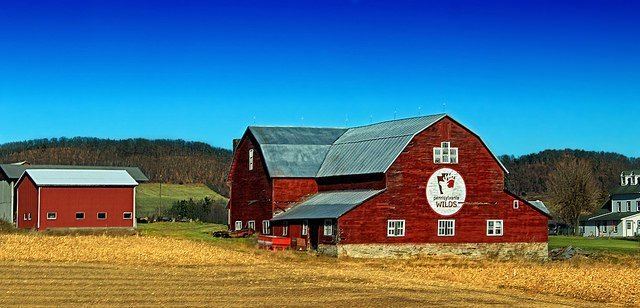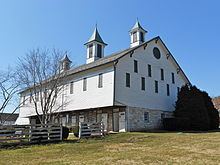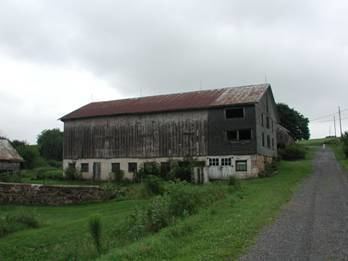 | ||
Amish pennsylvania barn building on goldwing doug1611kjv
A Pennsylvania barn is a type of banked barn built in the US from about 1790 to 1900. The style's most distinguishing feature is the presence of an overshoot or forebay, an area where one or more walls overshoot its foundation. These barns were banked, that is set into a hillside to ensure easy access to both the basement and the level above. Almost all Pennsylvania barns have gable roofs, but the forebay and banked nature of the structures easily give them away. Barn scholar Robert Ensminger classified the Pennsylvania barn into three types: Standard Pennsylvania, Sweitzer, and Extended Pennsylvania barns. The Pennsylvania style barns were also built west of Pennsylvania and in Canada.
Contents
- Amish pennsylvania barn building on goldwing doug1611kjv
- Dylan and aimee wedding highlights western pennsylvania barn wedding
- Standard Pennsylvania barn
- Sweitzer barn
- Extended Pennsylvania barn
- References

Dylan and aimee wedding highlights western pennsylvania barn wedding
Standard Pennsylvania barn

"The Standard Pennsylvania barn is the most numerous and widely distributed class of the Pennsylvania barns." These were built between 1790 and 1890. The key characteristic in identifying this type is the forebay is built in a way that the gable end is symmetrical with both front and rear walls being the same height.
Sweitzer barn

Sweitzer barns are also known as Swetzer or Swisser. The name reflects the barn's probable origin from Switzerland. The Sweitzer is the "original Pennsylvania barn" and was originally a log crib-type barn built between 1730 and 1850. The distinguishing feature of this type of forebay barn is that the forebay projects in a way that the gable end is asymmetrical.
Extended Pennsylvania barn

As agricultural productivity increased the Standard Pennsylvania barn was not large enough, and this third class of barn developed first by adding on to the Standard barn and then by designing new barns based on the Standard but with more space added on to the forebay side, ramp side or being made taller and adding another floor level.

